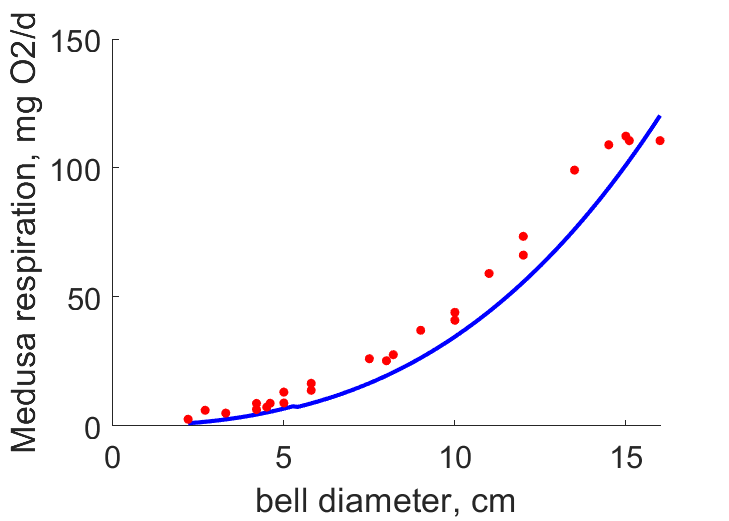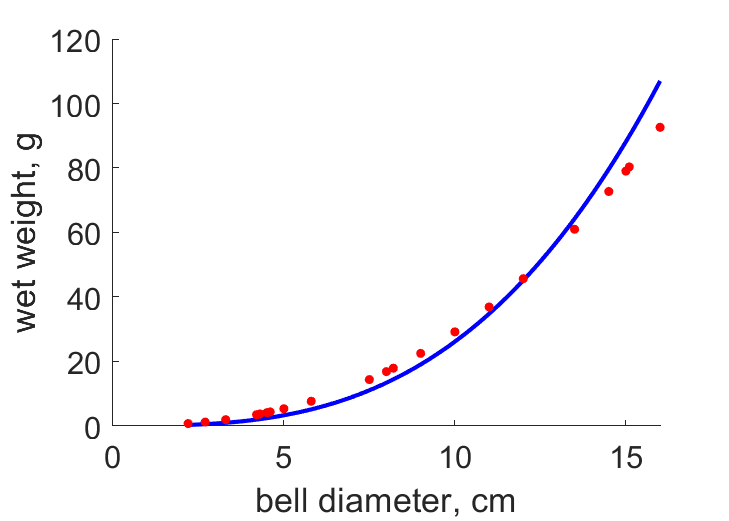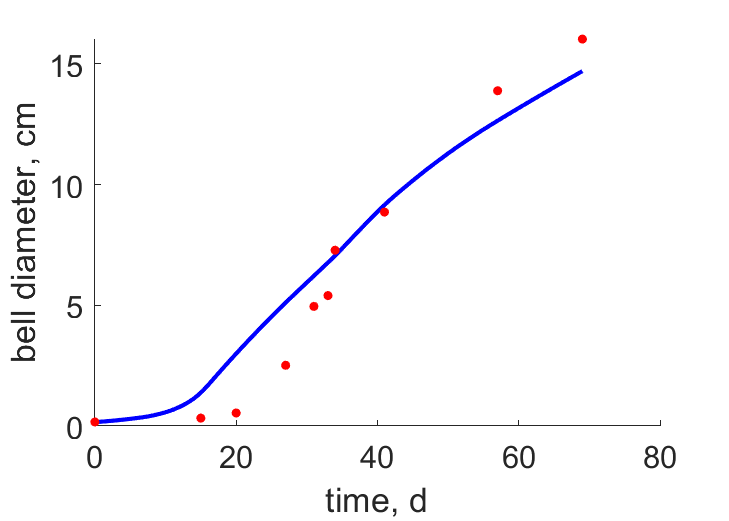Predictions & Data for this entry
| Model: abj | climate: MA | migrate: | phylum: |
| COMPLETE = 2.3 | ecozone: MPSW, MI | food: biPz, jiAa | class: |
| MRE = 0.214 | habitat: 0iMp, biMb | gender: D | order: |
| SMSE = 0.059 | embryo: Mp | reprod: Aa | family: |
Zero-variate data
| Data | Observed | Predicted | (RE) | Unit | Description | Reference |
|---|---|---|---|---|---|---|
| ab | 6 | 4.683 | (0.2196) | d | age at birth of the medusae (release of ephyrae) | Sugi1965 |
| aj | 15 | 19.22 | (0.2814) | d | age at metam of the medusae (release of ephyrae) | guess |
| ap | 40 | 33.18 | (0.1705) | d | age at puberty of the medusae | Sugi1963 |
| am | 360 | 368.9 | (0.02484) | d | life span of the medusae | guess |
| Lb | 0.2 | 0.1519 | (0.2405) | cm | bell diameter at birth | Sugi1963 |
| Lj | 1 | 1.684 | (0.6835) | cm | bell diameter at metam | guess |
| Lp | 5.5 | 5.316 | (0.0334) | cm | bell diameter at puberty | Sugi1963 |
| Li | 20 | 29.96 | (0.4981) | cm | ultimate bell diameter | Hamn1982 |
Uni- and bivariate data
| Data | Figure | Independent variable | Dependent variable | (RE) | Reference |
|---|---|---|---|---|---|
| LJO |  | bell diameter | Medusa respiration | (0.194) | McCl1994 |
| LW |  | bell diameter | wet weight | (0.1219) | Musc1986 |
| tL |  | time | bell diameter | (0.1978) | Sugi1963 |
Pseudo-data at Tref = 20°C
| Data | Generalised animal | Mastigias papua | Unit | Description |
|---|---|---|---|---|
| v | 0.02 | 0.008836 | cm/d | energy conductance |
| kap | 0.8 | 0.9 | - | allocation fraction to soma |
| kap_R | 0.95 | 0.95 | - | reproduction efficiency |
| p_M | 18 | 31.25 | J/d.cm^3 | vol-spec som maint |
| k_J | 0.002 | 0.002 | 1/d | maturity maint rate coefficient |
| kap_G | 0.8 | 0.7966 | - | growth efficiency |
Discussion
- I had to make a few of guesses to fill gaps. I based those assumptions on general results for other Scyphozoans
- This entry is about mudusae only; no mass info availeble for the polyp stage
Facts
- Two reproduction modes: asexual when polyp and sexual when medusae (Ref: Sugi1964)
- Asexual reproduction produce either new polyp (budding) or ephyrae (strobilation) (Ref: Sugi1964)
- This species lives in symbiosis with zooxanthellae (Ref: Sugi1964)
- Zooxanthellae are taken at the polyp stage and are transmitted via asexual reproduction but not via sexual reproduction (Ref: Sugi1964)
- Zooxanthellae seem necessary for the strobilation (Ref: Sugi1964)
Bibliography